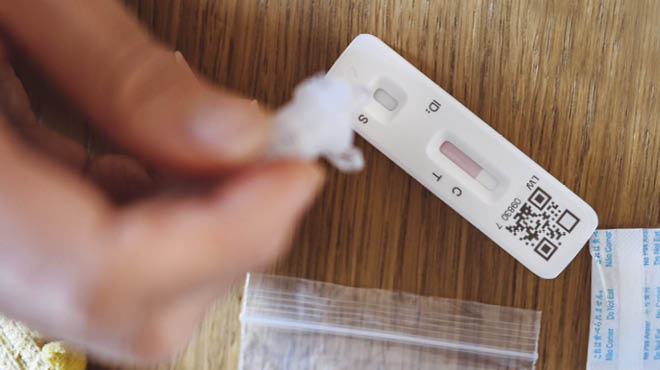Recent Posts
-

-
 Patient StoriesA lifesaver saved: An EMS veteran’s journey from rescue to recoveryNovember 14, 2025
Patient StoriesA lifesaver saved: An EMS veteran’s journey from rescue to recoveryNovember 14, 2025 -

How COVID-19 has changed alcohol use

Life has changed dramatically since March when communities began enacting stay-at-home orders to slow the spread of COVID-19. As many restaurants and bars closed, at-home alcohol sales increased, according to data compiled by The Nielsen Company (US) LLC.
Victor Karpyak, M.D., Ph.D., a Mayo Clinic psychiatrist and addiction researcher, says using alcohol to celebrate or relieve stress is an age-old human trait, but overusing alcohol as a coping mechanism during these difficult times has consequences.
Motives for drinking
People may choose to drink for many reasons, but overall motives tend to fall into two main categories: enhance positive feelings or suppress negative feelings. During the COVID-19 pandemic, both motives can play a role in drinking more than usual.
"First is related to the stress of dealing with the restrictions of COVID. We have a natural desire to be with friends or visit attractions, or just to get out of your house," says Dr. Karpyak.
Drinking suppresses these negative emotions of missing activities or loved ones, and overall feelings of loneliness.
The second motive to drink alcohol during this time is that "people are trying to achieve something that has positive connotation during this time," says Dr. Karpyak. People may drink more to enhance the feelings associated with the positive news or artificially create positive feelings.
There are gender differences in drinking motives, as well. Men are more likely to drink alcohol to enhance positive feelings, while women are more likely to drink to suppress negative feelings, according to Dr. Karpyak.
Drinking levels
The National Institute on Alcohol Abuse and Alcoholism defines moderate drinking as up to one drink per day for women and up to two drinks per day for men. And the overall current recommendations are no more than 14 drinks per week and no more than four drinks per occasion for men, and no more than seven drinks per week and no more than three drinks per occasion for women.
"If it becomes three or four drinks today, and it is, again, three or four drinks tomorrow, then very easily we start to hit above the weeklong threshold. And this is what needs to be an alarming sign," says Dr. Karpyak.
Warning signs
An escalating pattern of drinking may be a potential sign of alcohol abuse and development of addiction, which affects relationships and the body.
Here are common warning signs according to Dr. Karpyak:
- Increased frequency in drinking alcohol
- Increased alcohol consumption
- Use despite concerns expressed by others
- Use despite negative consequences on social or other areas of functioning
- Use despite behavioral problems, such as acting inappropriately, or putting yourself or others into dangerous situations
The COVID-19 pandemic has changed some social behavior expectations as many traditional in-person social activities have been canceled or limited. "This gives some people a sense that drinking at home is OK, while in other circumstances, these people would have been concerned or received negative feedback due to consequences of their drinking," says Dr. Karpyak. This can lead to some people drinking more than they would have previously.
How to help
If you are concerned about your drinking or a loved one's drinking during the pandemic, there are some things you or your loved one can do:
- Get active.
To avoid relying on alcohol to relive pressure, find ways to occupy your mind and time in a productive way, such as exercising, practicing hobbies, or talking with friends and family. "Don't rely on passive entertainment like watching TV," says Dr. Karkyak. "Keep different healthy activities until you find something that is enjoyable." Seek out healthier alternatives for managing stress and anxiety. - Assess your habits and symptoms.
Dr. Karpyak recommends online self-assessment tools created by the National Institute on Alcohol Abuse and Alcoholism to help you determine if the drinking is escalating, and causing distress or harm. - Share your concerns.
Have an honest, clear and direct conversation with your loved one. "Use specifics, facts and evidence to bring this concern to his or her attention," says Dr. Karpyak. "Don't be judgmental. Stick to the facts." If you don't have a trusting relationship with the person using, invite another person who is respected and trusted to address the concern." - Talk with a primary care provider.
"Many people carry trust in their primary care providers, and they have knowledge and tools to assess for presence of alcohol abuse, such as tests that detect changes in liver function or increased size in red blood cells," say Dr. Karpyak. "They can deliver this message in a nonjudgmental way based on the facts and facilitate referral for specialist evaluation, if necessary."
If you or a loved one is struggling with alcohol use, do not hesitate to reach out for help during the COVID-19 pandemic.


